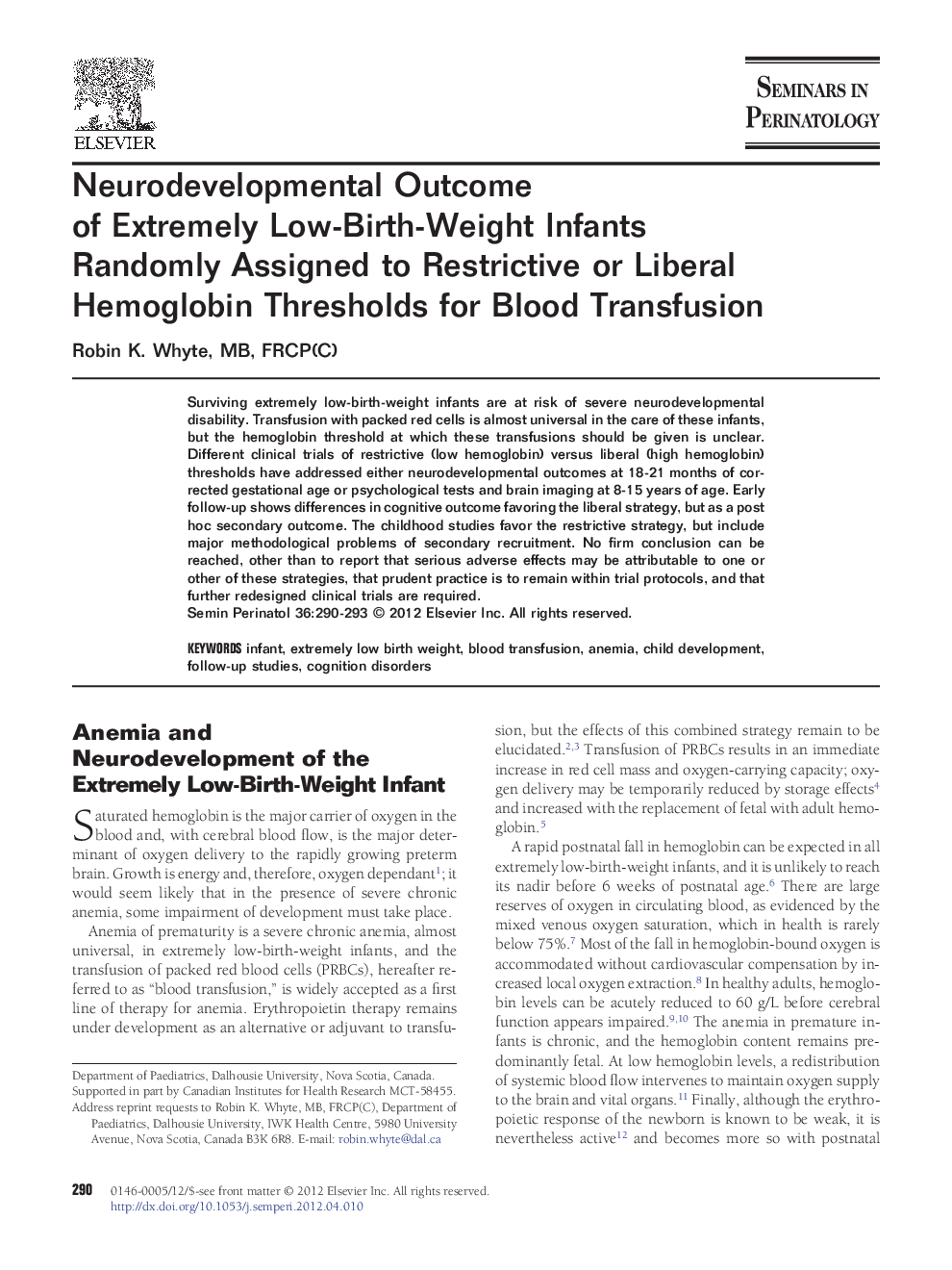| Article ID | Journal | Published Year | Pages | File Type |
|---|---|---|---|---|
| 3836467 | Seminars in Perinatology | 2012 | 4 Pages |
Surviving extremely low-birth-weight infants are at risk of severe neurodevelopmental disability. Transfusion with packed red cells is almost universal in the care of these infants, but the hemoglobin threshold at which these transfusions should be given is unclear. Different clinical trials of restrictive (low hemoglobin) versus liberal (high hemoglobin) thresholds have addressed either neurodevelopmental outcomes at 18-21 months of corrected gestational age or psychological tests and brain imaging at 8-15 years of age. Early follow-up shows differences in cognitive outcome favoring the liberal strategy, but as a post hoc secondary outcome. The childhood studies favor the restrictive strategy, but include major methodological problems of secondary recruitment. No firm conclusion can be reached, other than to report that serious adverse effects may be attributable to one or other of these strategies, that prudent practice is to remain within trial protocols, and that further redesigned clinical trials are required.
